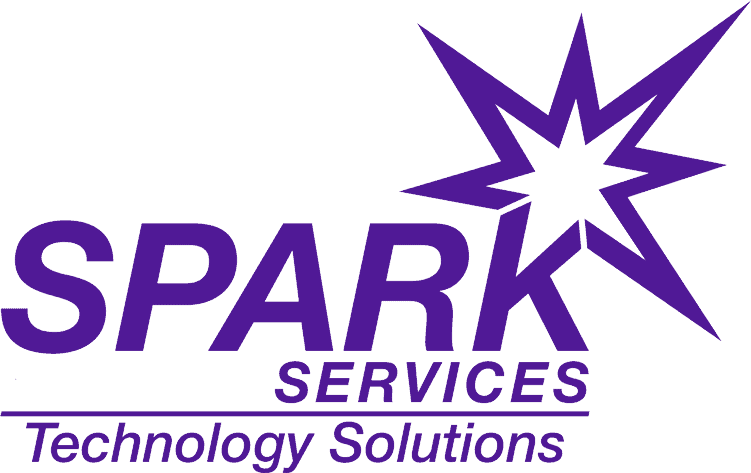The latest era of PBX technology takes the potential of IP connections to the next level, with the promise of unified communications. The introduction of cloud and internet-based services has been a crucial revolution in the communications landscape. However, call routing today is only a minor ingredient of the entire communication formula.
As a result, PBX solutions in the age of UC are rarely advertised as standalone services. Instead, you get your PBX technology bundled with other essential features for team connectivity. Features can range from traditional PBX components, like voicemail hold music, and routing technology, to video conferencing support and voice-to-text recordings.
PBX technology now operates alongside instant messaging tools for collaboration in the hybrid workforce, video conferencing, and group calling. In addition, we’ve seen new features to enhance and supplement what the PBX can do all the time, from intelligent systems that assist with routing to clever voice analytics tools that help monitor call quality.
What is PBX?
PBX (Private Branch Exchange) refers to a private telephone network that enables users to talk to each other, mainly in a business landscape. A PBX operates the internal telephone network of the company, handling routing and calling capabilities for outbound and inbound calling.
A PBX Phone system today is a solution that offers businesses the necessary features and functions exclusive to business communication needs. The PBX differs from the older Key Telephone System in a few ways. The telephone system users used to have to manually select their outgoing lines using special telephones with unique control buttons. Alternatively, PBX solutions can pick the outgoing line automatically. Telephone sets for the PBX environment generally don’t have office line control buttons.
Each device connected to the PBX, from telephones and computer modems to fax machines, is an “extension” with an extension number. When the PBX arrived, it offered businesses the advantage of cost savings on internal phone calls by handling circuit switching via central office lines. As PBX systems grew more popular, they also began to take on new features.
Various PBX types are available today, which may use multiple communication channels, such as VolP (Voice Over Internet Protocol), and Integrated Services Digital Network (ISDN).
How Does It Work?
The PBX phone systems are IP based. Due to the advantages offered by internet protocol (IP), the analog to the digital transmission of an audio signal is performed by PBX technology. In this VoIP PBX, a virtual PBX network is utilized, which can be operated from remote locations over internet-based systems. In this network, Ethernet cables are used. Therefore digital signals can be easily transmitted. In VoIP PBX, the virtual PBX system is used for analog to digital signal conversion. Further, the network features fiber optic telephony switches that direct the signal to different trunk lines.
Components of PBX Phone Systems
– Private Branch Exchange Server: This is the main component of PBX phone systems. It manages everything from call routing to voicemail.
– Gateway: This connects the PBX to PSTN, transporting call signals to and from the business to the telecom network.
– Voicemail server: This is where recorded voices for automated greetings and all voicemail is stored.
– Analogue phones: These phones are used by agents to make and receive calls. They are connected to the PBX via phone lines.
Kinds of PBX
PBX technology has evolved significantly over the years. For example, there are no longer manual PBX switching services from the early days of internal communications. Increasingly, more companies are starting to move their PBX environment into the cloud so that companies can configure a shared phone system across various users and locations.
The most common choices for PBX include:
Traditional PBX Phone System
These systems have been around for a long time and connect to the Public Switch Telephone Network (PSTN) over Plain Old Telephone Service (POTS) lines. The PBX manages calls between phones and fax machines by being physically connected to them over copper wiring. Incoming calls are routed through the PBX and out to the phones, and calls can be transferred between phones via the PBX. Unfortunately, the PBX itself typically lives in an office’s telecom closet. As a result, these systems are incapable of many modern-day phone system features, such as voicemail to email, and cannot deliver high-definition voice calls.
On-Premises PBX
An on-premises PBX is becoming old school in the modern digital age, but it’s still something that many companies prefer to invest in. On-premises solutions offer you an on-site environment where you can manage all of your PBX needs. This product might be ideal for people who aren’t planning on growing or expanding fast. However, there are additional maintenance costs and technology investments to consider.
Hosted PBX
A Hosted PBX is essentially the “new era” of PBX technology. Internet-based PBX solutions enable you to handle your employees’ phones and technology from your web browser. First, you purchase the phone and service; then, you can roll out and adapt features of the PBX functionality from an online portal. The online environment usually offers control over things like call forwarding, hold music, auto-attendants, and call routing. You might even be able to set up custom hold messages.
Advantages
Free Internal Communication
One of the significant advantages of a PBX phone system is that they share a trunk line with internal phones. This results in accessible internal communication.
Extra features for managing high call volumes
PBX phone systems offer extra features for call management that enable businesses to handle high call volumes in an organized manner.
Easy call transfers
Transfer customers to the correct department with essential call transfers offered by major PBX system providers.
Lesser number of phone lines required
Decreases the number of phone lines that need to be purchased. For example, for 50 agents, businesses need to buy only 7-10 phone lines since the PBX optimizes all communication.
The PBX Phone System began as a simple solution to an expensive issue. Once a tool designed to decrease the costs of connecting with internal employees, the PBX system is now a vital component of a transformational communication experience in an increasingly digital world.
We at SPARK Services have been upgrading our services to support a changing communication landscape. Any business with a customer-facing team that wants to streamline customer communication requires an easy-to-use, cost-effective, reliable, and scalable phone system. Connect with SPARK Services to understand the PBX Systems and know more!




